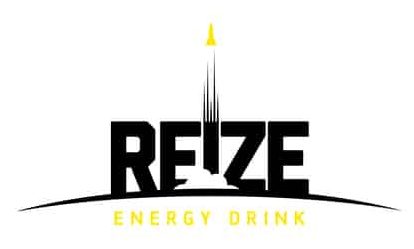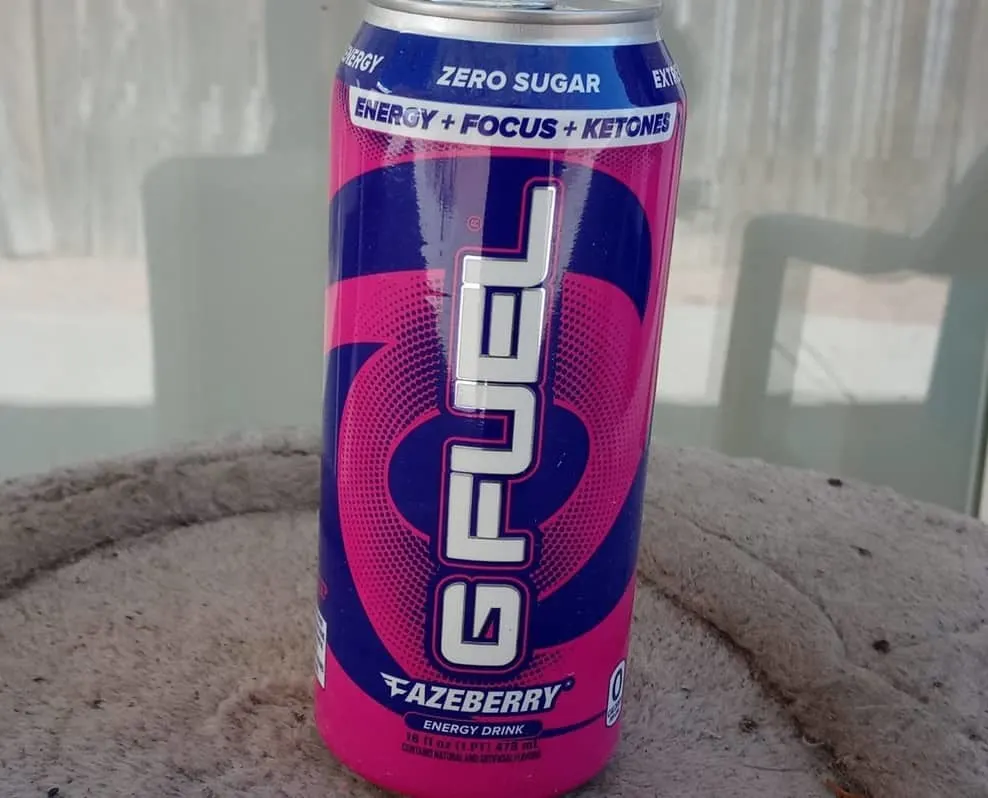G Fuel Cans are a quick and convenient way to get your daily dose of G Fuel without having to mix it yourself, which makes it pretty great if you happen to be in a rush.
But you may be wondering, what exactly goes into each of those cans, and what does each ingredient do for you?
G Fuel contains zero calories, 300mg of caffeine, and they’re completely sugar-free, with a handful of other ingredients, such as B-Vitamins and antioxidants, as well. Both G Fuel can and powder sachet contains the same ingredients, so you’ll be getting the same amount of energy and micronutrients no matter what.
For a more detailed look, read on to find out everything you need to know about G Fuel Cans, from their caffeine content and an ingredients breakdown, and what exactly it does for your energy levels.
Let’s get started…
G Fuel Can Nutrition Facts
For starters, here’s everything you need to know about the nutrition of a G Fuel Can in an easy-to-read table:
| Typical Values | Per 16 fl.oz can of G Fuel |
| Energy | 0 calories |
| Fat (Saturated) | 0g (0g) |
| Carbohydrate (Sugars) | 0g (0g) |
| Caffeine | 300mg |
| Protein | 0g |
| Sodium | 70mg |
| Potassium | 85mg |
| Vitamin C | 45mg |
| Vitamin B3 (Niacin) | 4mg |
| Vitamin B6 | 0.4mg |
| Vitamin B12 | 0.6µg |
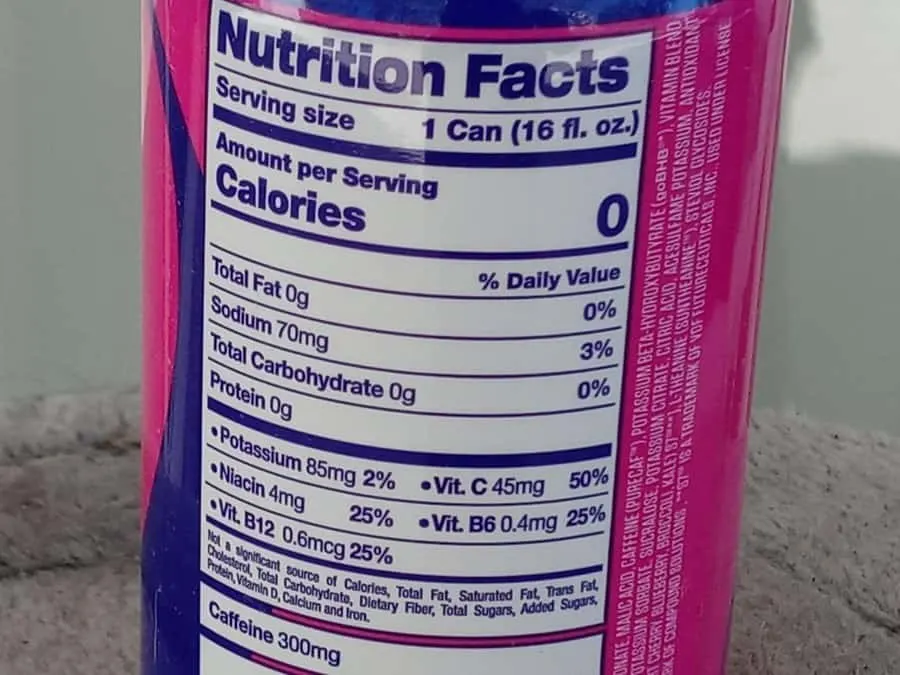
How Many Calories Are in a Can of G Fuel?
A can of G Fuel contains zero calories, which makes it one of the better energy drinks health-wise in that regard, especially if you’re on a specific diet or trying to lose some weight.
One of the many benefits of a zero-calorie energy drink, such as a G Fuel Can, is that you don’t have to plan your meals around them or spend extra time burning off extra calories.
Granted, you’re not necessarily getting any energy from the drink either.
Your body does require a substantial amount of calories, which, for a healthy young adult, ranges between about 2000 to 2400 calories for women and 2400 to 3000 calories for men.
So while a can of G Fuel may be pretty stimulating, it really isn’t a substitute for an actual meal, so keep that in mind whenever you’re reaching for another can instead of taking a break and eating something.
If you feel like you need energy drinks with some calories in them, take a look at the article I’ve written on the best energy drinks with less sugar, which I think you’ll find informative.
G Fuel Can Ingredients
Although G Fuel’s blend of ingredients in each can is not the same as their powdered version, it definitely works. Listed below is the full list of ingredients for your reference:
- Carbonated Water
- Natural and Artificial Flavors
- Sodium Gluconate
- Malic Acid
- Caffeine (Purecaf™)
- Potassium Beta-Hydroxybutyrate (goBHB®)
- Vitamin Blend (Maltodextrin, Vitamin C, Vitamin B3, Vitamin B6, Vitamin B12)
- L-Tyrosine
- Sucralose
- Potassium Citrate
- Citric Acid
- Acesulfame Potassium
- Antioxidant Blend (Green Coffee Bean Extract, Green Tea Extract, Turmeric Extract, Tart Cherry, Blueberry, Broccoli, Kale)
- L-Theanine
- Steviol Glycosides
How Much Caffeine is in a G Fuel Can?
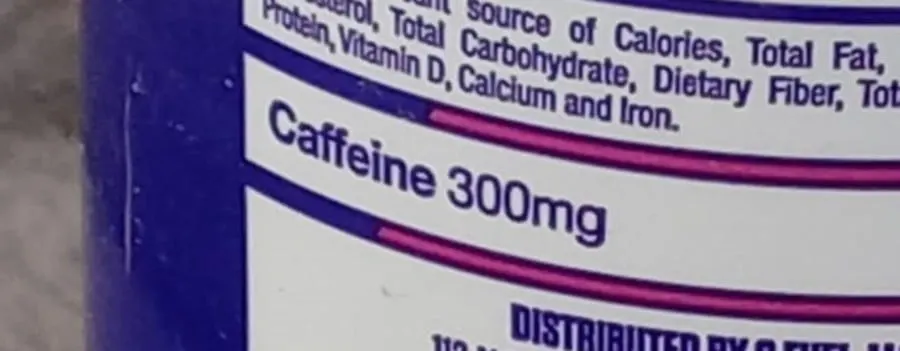
A regular 16 fl. oz can of G Fuel has 300mg of caffeine, which is a pretty massive amount of caffeine.
At 300mg of caffeine, a can of G Fuel is one of the strongest energy drinks available on the market, placing itself alongside both Reign and Bang, which is a mildly dubious honor.
Personally, I prefer somewhere between 50 to 100mg of caffeine per serving for my energy drinks, which is just enough to give me a boost, but not too much that I might not be able to think straight afterward.
As such, the caffeine content in G Fuel is way too high for me, but if you’re a caffeine veteran with a high enough metabolism, 300mg of caffeine might be right up your alley.
But, if you happen to be caffeine-sensitive, it’s probably best to choose a lighter drink instead of diving off the caffeinated deep-end with G Fuel Cans.
Even if you drink caffeinated beverages regularly, the FDA approves a caffeine intake limit of no more than 400mg per day. Any more than that might lead to side effects such as:
- Restlessness and shakiness
- Insomnia
- Headaches
- Dizziness
- Abnormal heart rhythm
- Dehydration
- Anxiety
- Dependency
As a can of G Fuel has such a high caffeine content, try not to have any other caffeinated beverages, such as coffee, tea, or soda alongside it.
That said, so long as you moderate how many cans you have in a day, G Fuel Cans will definitely provide you with the energy boost you need, without the terrible caffeine-related side effects.
For more information on caffeine and what it does, take a look at the video below:
How Much Sugar is in a G Fuel Can?
G Fuel Cans contain no added sugar and are completely sugar-free, which definitely gives it a healthier edge in comparison to your regular sugary energy drinks.
Having no sugar, a can of G Fuel is definitely a lot healthier in the long run for you, especially if you plan on making energy drinks a part of your daily routine.
You’ll also get to avoid the dreaded sugar crash you might get from other energy drinks, which is a huge plus if you’re planning on working for a bit longer even after the effects of a can of G Fuel wear off.
Granted, you also won’t experience the dopamine hit you’ll usually get from an energy drink due to the lack of sugar, but it’s a decent tradeoff given how bad sugar can be for you if consumed in excess consistently.
Do G Fuel Cans Have Artificial Sweeteners?
While free of sugar, G Fuel Cans do contain Sucralose and Acesulfame Potassium, which are both artificial sweeteners that help improve the overall taste of the drink.
As both sucralose and acesulfame potassium are zero-calorie artificial sweeteners, they don’t have a massive impact on the overall nutritional value of a G Fuel can, which is definitely a good thing.
While artificial sweeteners are often a controversial topic, they have been approved for general use by the FDA, so there’s really not much to worry about so long as you have them in moderation.
Other Ingredients In G Fuel Cans
Potassium Beta-Hydroxybutyrate (goBHB®)
Beta-Hydroxybutyrate is essentially a ketone produced by the body when there’s a lack of carbohydrates or sugar present to convert into energy for your cells.
Put simply, Beta-Hydroxybutyrate is a backup energy source for your body when you’re lacking in calories. Hence, in the case where you have a balanced diet, it shouldn’t need to come into play all that often.
As for Beta-Hydroxybutyrate being used as an ingredient in G Fuel, it’s supposedly useful for giving you energy, a feeling of fullness, and sports performance, but the science definitely varies on that point.
In any case, it’s hard to determine if there might be any significant benefits from the Potassium Beta-Hydroxybutyrate in G Fuel Cans, as there’s no information about how much is actually included in the ingredients.
So take any potential benefits with a pinch of salt.
B-Vitamins
While not as high as the B-Vitamin content in the regular G Fuel Powder, canned G Fuel does contain a handful of B-Vitamins to give you that bit of nutrition in your energy drink.
I’ve listed the relevant B-Vitamins in a table below or click here if you need more information on them.
| G Fuel Can (16 fl.oz) | Tolerable Upper Intake Level | |
| Vitamin B3 (Niacin) | 4mg | 35mg |
| Vitamin B6 | 0.4mg | 100mg |
| Vitamin B12 | 0.6µg | N/A |
Maltodextrin
Maltodextrin is both a preservative and thickener, which helps improve the shelf life of G Fuel Cans.
While it adds a dietarily insignificant amount of sugar, it’s still pretty high on the Glycemic Index, so it can definitely cause a spike in your blood sugar levels.
Although safe in small doses, it’s advisable to avoid G Fuel Cans if you happen to be diabetic due to the possibility of them affecting your overall blood sugar levels.
In any case, if you’re looking for energy drinks that are suitable for diabetics, I’ve got the article right here.
Steviol Glycosides
Steviol Glycosides are the main component in the stevia plant and are what give it a sweet taste.
Stevia is basically used as a natural alternative to sugar, being 100 to 300 times sweeter than table sugar without any additional calories at all.
While stevia may be a healthier alternative to sugar and artificial sweeteners, the health benefits of stevia may be negligible considering that G Fuel Cans already contain artificial sweeteners.
Are G Fuel Cans Gluten-Free?
GFuel Cans are manufactured in a facility that also processes wheat, which may increase the chance of the product containing gluten in it.
While extremely unlikely, a can of G Fuel may contain traces of wheat within the drink, which might pose a problem if you have celiac disease.
Hence, I would personally recommend that you stay away from G Fuel Cans if you have celiac disease, given the possibility of cross-contamination.
If you’re worried that this applies to its powdered variation, regular G Fuel Powder is gluten-free and isn’t processed in the same facility, so you should be fine if you have the powdered version of G Fuel instead.
Still, if you’re not too sure about the gluten content, it’s always best to consult a health specialist to determine if there could be complications caused by adding G Fuel Cans to your diet.
For more information on gluten and gluten-free diets, check out the video below:
Do G Fuel Cans Contain Lead?
While a common misconception, G Fuel, in general, doesn’t contain any lead in them, with the ‘lead’ warning label simply being a product of local state law.
Essentially, the warning label on regular G Fuel is due to the Prop 65 Law in California, which has a significantly stricter limit than the FDA, as explained by the CEO of G Fuel:
G Fuel is made with naturally occurring vitamins and minerals, which absorb lead through the soil like all other natural vitamins, minerals, fruits, and vegetables grown in soil. G Fuel is well below the FDA’s limits.
Cliff Morgan, G Fuel CEO
Plus, G Fuel Cans don’t have the lead warning present, so it’s fairly safe to assume there’s really no reason to worry about the lead content in G Fuel.
Do G Fuel Cans Have Side Effects?
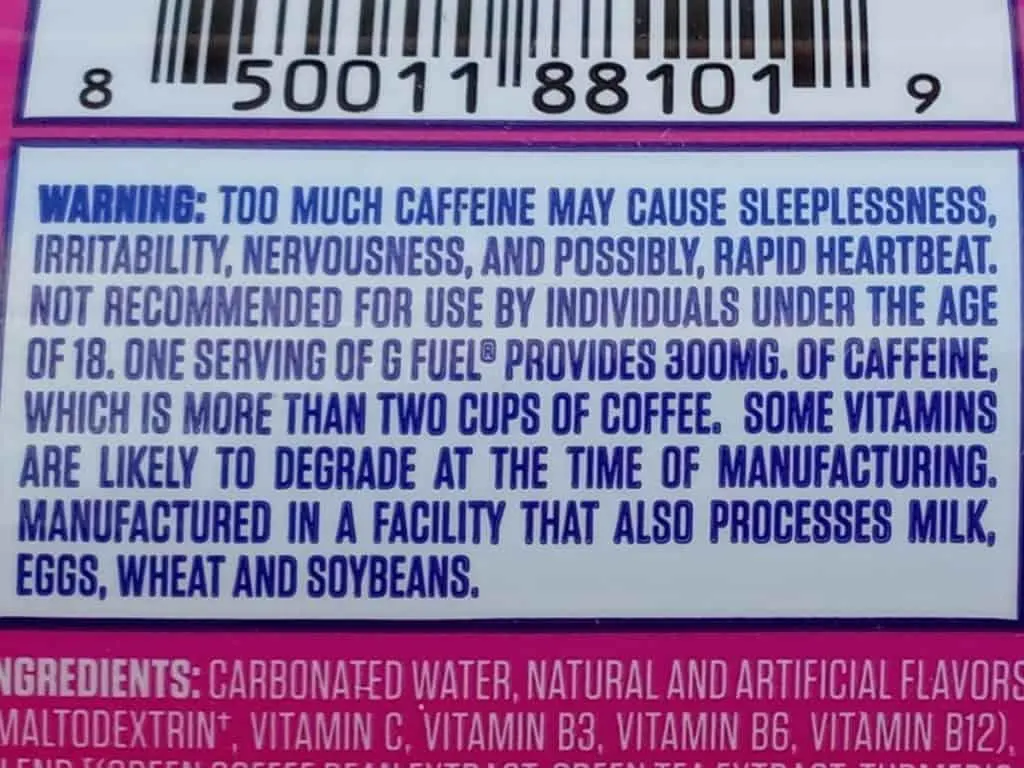
As long as you’re relatively healthy and have a controlled caffeine intake, having a can of G Fuel won’t lead to any unwanted side effects.
Generally, the ingredient that is most linked to the side effects would probably be caffeine.
G Fuel Cans have a high caffeine content in comparison to other caffeinated beverages, such as coffee, and even other energy drinks, being only 100mg lower than the FDA-approved daily intake.
Therefore, if you happen to be caffeine-sensitive, it’s probably better for you to try an energy drink with a lower amount of caffeine in it. You’ll definitely find the energy drink experience a lot better.
You should also avoid having an energy drink as strong as G Fuel Cans alongside other caffeinated beverages, such as coffee, or tea, as all that caffeine will definitely add up, making you feel rather shaky afterwards.
All in all, the best thing to do to avoid side effects from G Fuel is to watch your caffeine intake and not have too many cans of G Fuel a day, even if you think you need it.
G Fuel Can Flavors
While not as extensive as their powdered line-up, G Fuel Cans do have a pretty interesting selection of flavors for you to choose from:
- Blue Ice
- Rainbow Sherbet
- Sour Cherry
- FaZeberry
- Sour Blue
- Bahama Mama
- Raging Gummy
- Nemesis Tea
- Tropical Rain
G Fuel Can Alternatives
If you’re looking for other energy drinks that are similar to G Fuel, here’s a quick list to get you started:
There are also some great powdered options for you to consider, besides the original powdered version of G Fuel:
- Zipfizz
- Advocare Spark
- REIZE Energy Drink (my fav)
REIZE (10 out of 10)
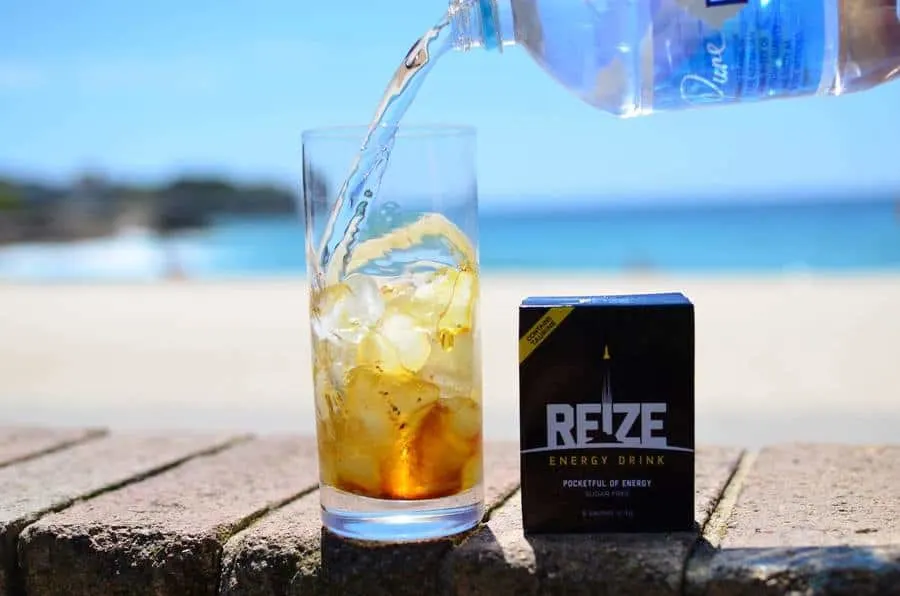
G Fuel Cans are great, but 300mg of caffeine isn’t for everyone, so how about an energy drink that gives that energy boost without the headache?
REIZE is a powdered energy drink that comes in a convenient 4g sachet. With a sensible 50mg of caffeine, it’s completely sugar-free and has only 11 calories per serving.
REIZE also contains a smart blend of taurine, ginseng, and B-group vitamins to give you the perfect energy boost without the sugar crash afterward.
The best thing about REIZE? You can get it shipped straight to your door for only about $1 per drink.
That’s outstanding value for money.
Try REIZE today and you might just find that it’s a smarter choice than G Fuel Cans.
